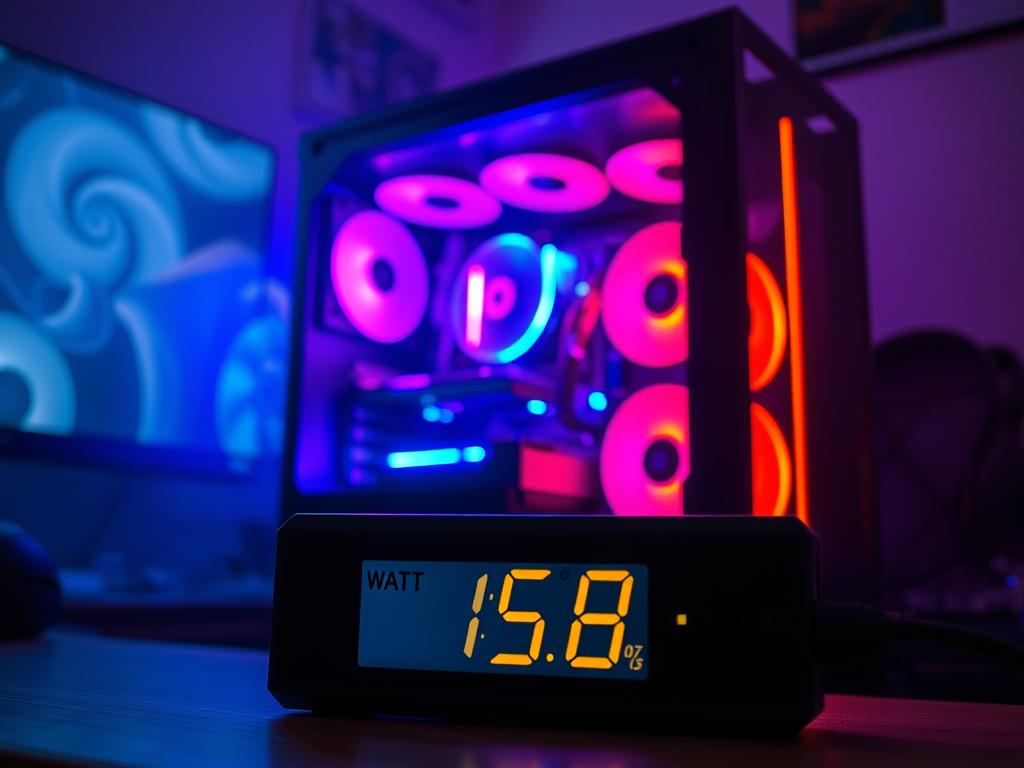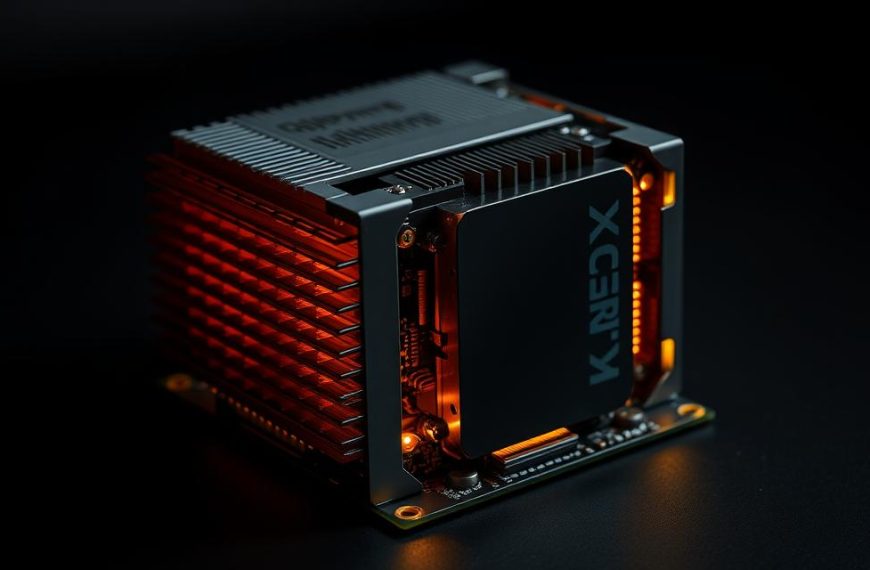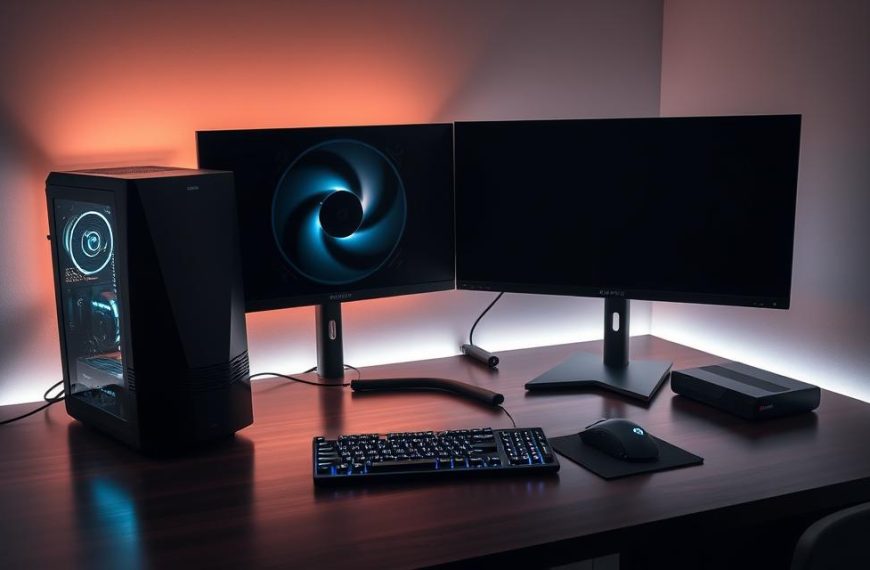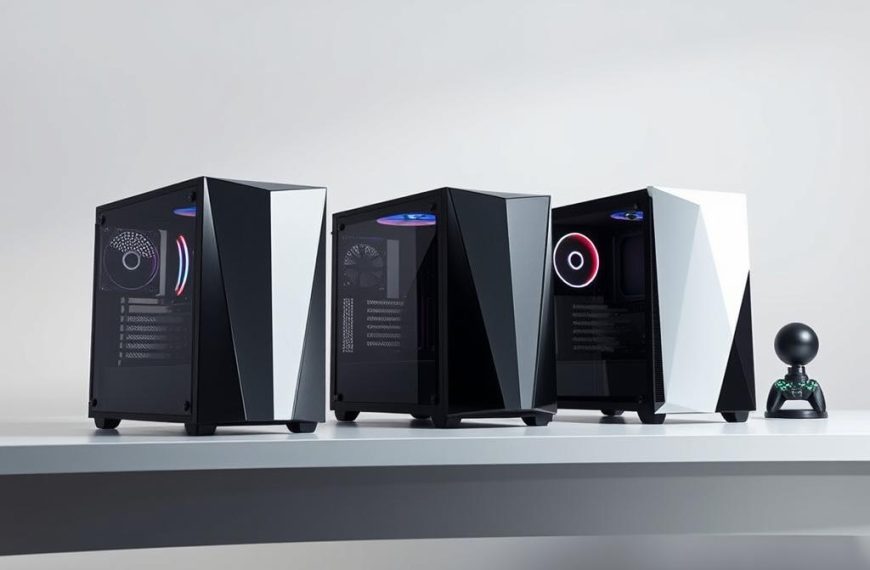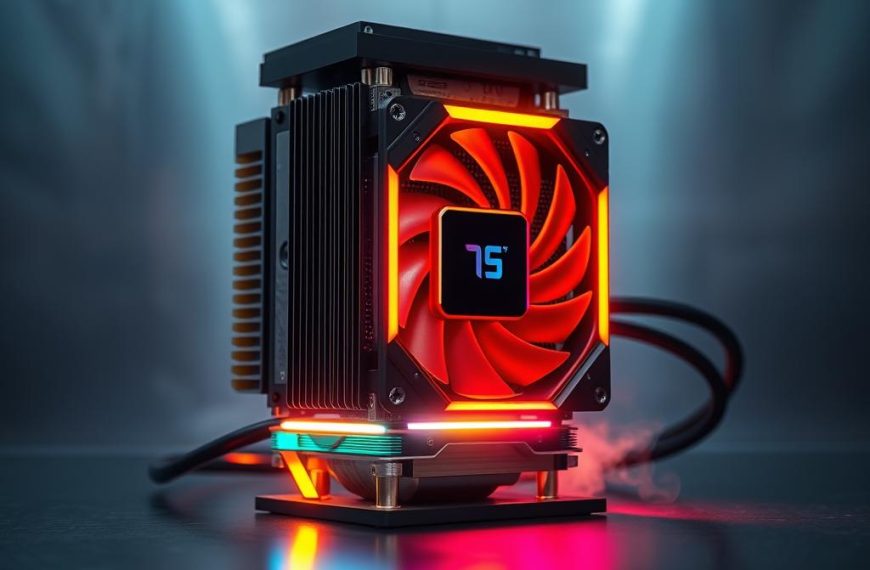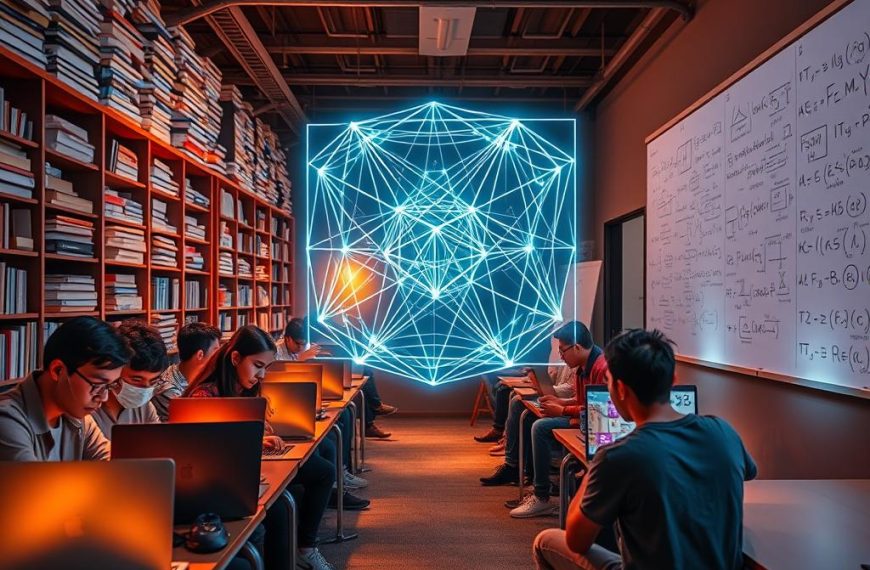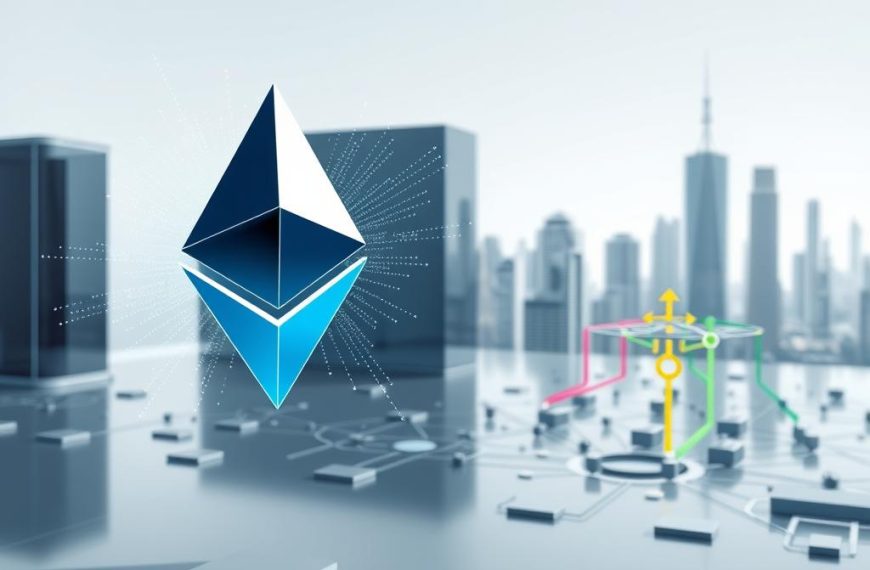Gamers often wonder about the electricity costs of their gaming setups. A mid-range gaming PC typically uses 300 to 500 watts. This can have a noticeable effect on your monthly power bill.
Surprisingly, most gamers spend little on powering their high-performance machines. An average gaming PC costs about £1.33 per month to run. This makes gaming a fairly cheap hobby in terms of energy use.
Power use varies widely based on components and gaming intensity. Entry-level systems use 300 to 375 watts. High-performance setups can reach 1000 watts during intense gaming sessions.
Dedicated gamers who play 3 hours daily clock up 1,095 gaming hours yearly. This extended use affects overall power consumption. However, the impact isn’t as dramatic as you might think.
Smart component choices and energy-saving practices can help manage electricity costs. Balancing performance with energy efficiency is key. This approach works for both casual players and hardcore gamers alike.
Understanding Gaming PC Power Consumption
Gaming PCs are unique machines with distinct energy needs. They require more power than standard computers to deliver exceptional visuals and smooth gameplay.
Modern gaming PC power usage varies based on system configuration. A typical gaming rig uses 300 to 500 watts during intense gaming. High-end systems might reach up to 1000 watts.
Basic Power Requirements
Knowing your gaming rig’s energy use helps manage electrical costs. Key factors affecting power draw include graphics card and processor specs.
Cooling system complexity and additional peripherals also play a role.
- Graphics card performance
- Processor specifications
- Cooling system complexity
- Additional peripheral devices
Average Energy Usage Rates
A typical gaming PC with a 300-watt power supply uses about 2.4 kilowatt-hours (kWh) of electricity. This is based on six hours of daily use.
The cost implications vary depending on local electricity rates.
Gaming vs Standard PC Consumption
Gaming PCs use far more energy than standard computers. An office desktop might use 50-100 watts, while a gaming rig can draw 300-500 watts.
Smart power management and energy-efficient components can help reduce electrical demands. This ensures both top performance and cost-effectiveness.
Power-Hungry Components in Gaming PCs
Modern gaming PC components are powerhouses of computational performance. They need significant electrical energy for exceptional gaming experiences. Understanding their power consumption helps gamers make informed decisions about system design.
Several gaming PC components are primary electricity consumers:
- Graphics Processing Units (GPUs)
- Central Processing Units (CPUs)
- Motherboards
- Power Supply Units (PSUs)
Graphics cards are the most electricity-intensive gaming PC components. High-end NVIDIA RTX 4090 graphics cards can consume over 450 watts. This substantially impacts overall system power draw.
Multi-core CPUs also contribute significantly. They typically use 100-150 watts during intensive computational tasks.
Power consumption varies across different hardware configurations. An average gaming PC might draw 300-500 watts per hour during active gaming sessions.
Enthusiasts running elite-tier systems could see consumption reaching up to 1000 watts hourly.
Key power consumption insights for gaming PC components include:
- GPU power range: 30-1000+ watts
- CPU power range: 65-150 watts
- Motherboard power range: 25-100 watts
- RAM power range: 2-3.5 watts
Choosing energy-efficient, high-performance hardware can help manage electrical consumption. This approach maintains exceptional gaming performance whilst reducing power use.
How Much to Run a Gaming PC
Gaming PC electricity costs vary based on usage time and hardware. Understanding these expenses helps gamers make informed decisions about their setups.
A detailed breakdown of potential running costs is essential. This information can guide gamers towards more efficient energy use.
Daily Operating Costs
A typical gaming PC with a 500W power supply uses considerable electricity. Average electricity rates suggest the following costs:
- 3 hours of daily gaming: Approximately £0.39 per day
- Peak usage during intense gaming sessions: Up to £0.50 daily
- Energy consumption varies with component complexity
Monthly Electricity Expenses
Your monthly gaming PC electricity bill depends on how often you play. Here’s a breakdown of potential costs:
| Usage Intensity | Monthly Cost |
|---|---|
| Casual Gaming | £8.50 – £11.78 |
| Intensive Gaming | £15.00 – £22.50 |
Annual Cost Calculations
Long-term gaming PC running costs can be eye-opening. An average setup might incur:
- Moderate Usage: £141.36 per year
- High-Performance Systems: Up to £270 annually
- Energy-Efficient Models: Potential savings of 20-30%
These figures highlight the importance of energy-efficient gaming setups. Gamers can use this knowledge to optimise their systems and reduce costs.
Factors Affecting Gaming PC Energy Usage
Gaming PC efficiency depends on various power consumption factors. Your gaming rig’s energy use changes based on its components and usage. It’s a complex system with many variables affecting its electrical needs.
Key components greatly impact power consumption. These include GPU intensity, CPU workload, cooling needs, connected devices, and background processes.
- Graphics Processing Unit (GPU) intensity
- Central Processing Unit (CPU) workload
- System cooling requirements
- Peripheral device connections
- Background software processes
The NVIDIA GeForce RTX 3080 can use up to 320 watts during heavy gaming. High-performance CPUs might draw between 95 to 250 watts. This creates significant energy demands during intense gaming sessions.
Overclocking is another crucial factor in gaming PC efficiency. It increases power consumption exponentially. Gamers must balance performance with energy efficiency when pushing hardware limits.
Environmental conditions also affect your system’s energy needs. Room temperature, dust build-up, and airflow can impact power consumption. Proper care and smart component placement can help optimise energy use.
A well-managed gaming PC can significantly reduce unnecessary energy expenditure.
Idle and background processes contribute greatly to power usage. Your PC uses electricity even when you’re not gaming. This happens through background tasks, system updates, and connected devices.
Energy-Efficient Gaming PC Solutions
Building an energy-efficient gaming PC doesn’t mean compromising on performance. Gamers can create powerful rigs that are eco-friendly and cost-effective. Smart component choices and energy efficiency knowledge can lead to exceptional gaming experiences.
Choosing the right parts is key for an energy-efficient gaming PC. Let’s look at ways to reduce power use:
Power Supply Selection
The power supply unit (PSU) is crucial for energy efficiency. A PSU with a high 80 Plus Rating can greatly cut electricity use.
| 80 Plus Rating | Efficiency Level | Energy Savings |
|---|---|---|
| Bronze | 82-85% | 5-8% |
| Gold | 87-90% | 10-13% |
| Platinum | 90-92% | 14-16% |
| Titanium | 94-96% | 17-20% |
Component Efficiency Ratings
For an energy-efficient gaming PC, consider these component tips:
- Choose AMD Ryzen CPUs for superior performance-per-watt
- Select GPUs with efficient cooling and low idle power consumption
- Opt for SSDs instead of traditional hard drives
- Use mid-range processors for balanced performance
Energy-Saving Features
Try these energy-saving methods in your gaming setup:
- Enable sleep modes and auto-shutdown features
- Use smart power strips to eliminate standby power consumption
- Adjust monitor refresh rates when ultra-high performance isn’t necessary
- Minimise RGB lighting or use low-power modes
By using these tips, gamers can build PCs that perform well and keep energy costs low.
Tips to Reduce Gaming PC Power Consumption
Cutting energy use in gaming PCs is simpler than you might think. Easy tactics can help lower electricity bills for gamers. Start by tweaking Windows power settings to manage energy use automatically.
Regular upkeep is vital for energy efficiency. Clean your PC’s innards to prevent dust buildup. This stops parts from working harder and using more power.
Consider upgrading to energy-saving hardware like SSDs and modern power supplies. These can cut power use by up to 14% compared to older models.
Smart device management is key to reducing energy use. Switch off extra gadgets when not in use. Use advanced power strips to cut power to idle electronics automatically.
Every watt saved helps lower your gaming setup’s electricity costs. Small changes in daily habits can lead to big energy savings. This benefits both your wallet and the environment.
By following these steps, you’ll create a more sustainable gaming setup. You won’t have to compromise on performance either. Optimising system settings can greatly decrease your overall power draw.

